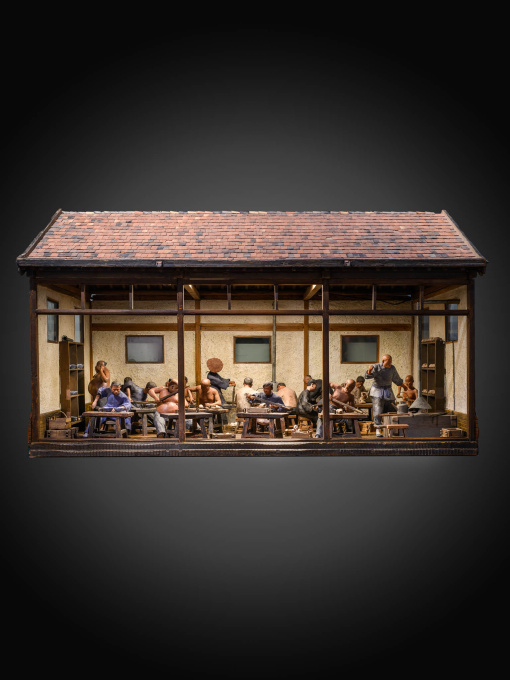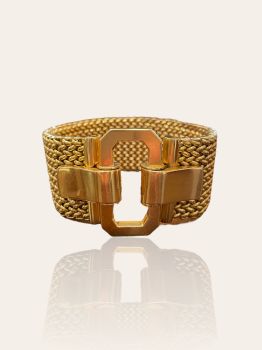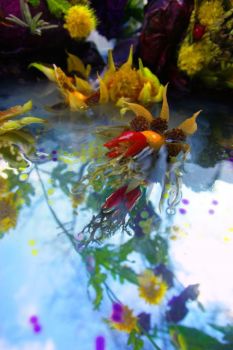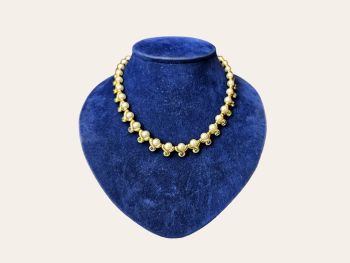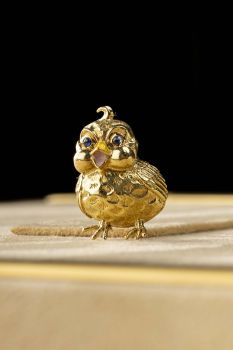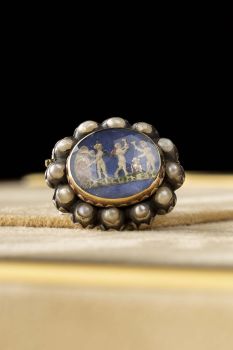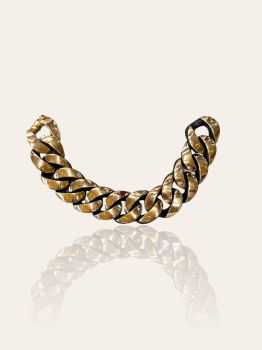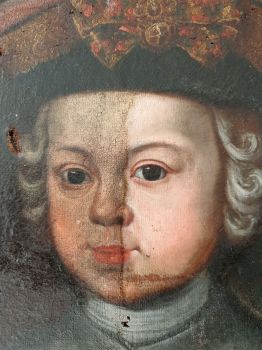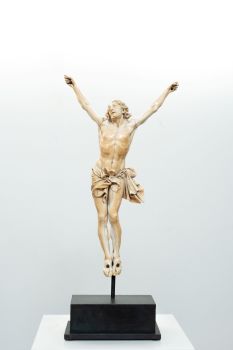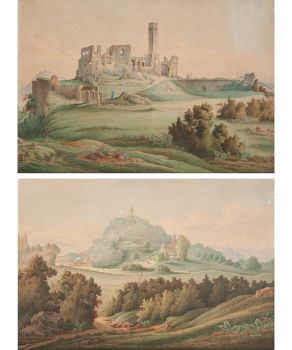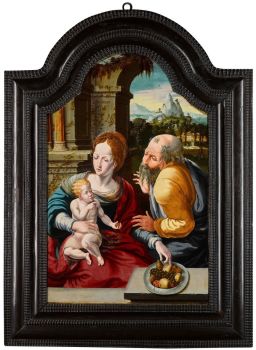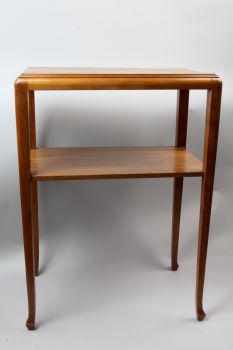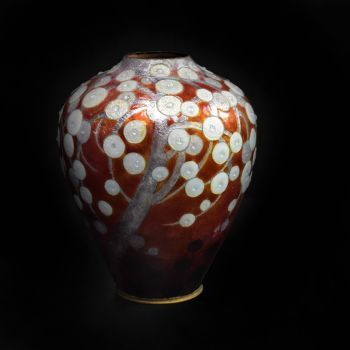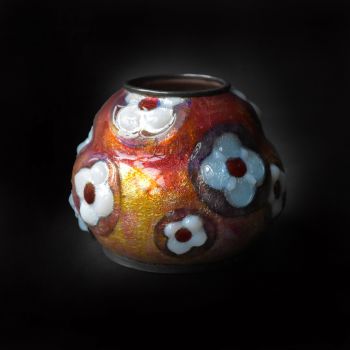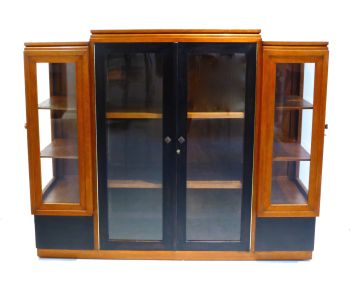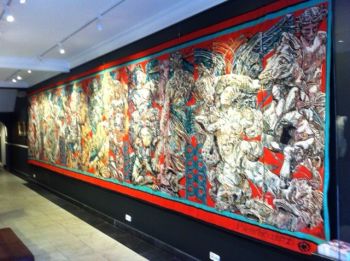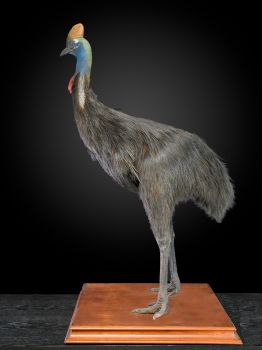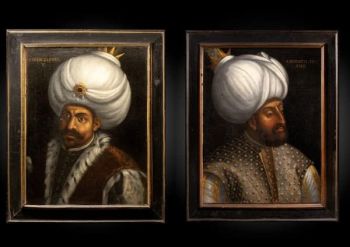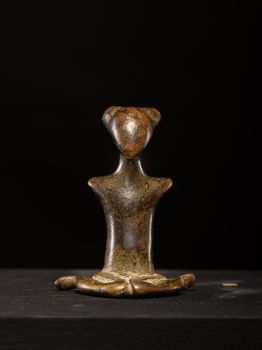19th C SCALED MODEL OF A CHINESE WORKSHOP WITH 17 POLYCHROMES TERRACOTTA FIGURES 1880 - 1900
Onbekende Kunstenaar
80 ⨯ 129 ⨯ 81 cm
ConditionVery good
Prijs op aanvraag
Spectandum Gallery
- Over kunstwerkThis diorama of an artisanal workshop groups 17 Chinese polychromed-decorated nodding head figures dated from the 19th C. Thirteen have nodding heads and are portraits of individuals, and some served as generalized representations of their trade class and occupation. Terracotta figures became popular as objects of curiosity that communicated the costumes and customs of Chinese culture. These figures were usually constructed by moulding clay and were then allowed to air dry and covered in a fine paper. Gesso was applied and the figures were decorated with a water-based gouache. Since these objects were not glazed nor fired in a kiln and are therefore more fragile, they experienced greater wear over time. Although the specific manufacturers and dates of such figures are comparatively rarely recorded, a documented pair of more elaborated nodding-head figures dating to 1803 'copied from the life and brought from Canton’, are in the collection at the Peabody Museum in Salem, Massachusetts (C.L. Crossman, The China Trade, Woodbridge, Suffolk, 1991, p.317, col.pl. 112). Similarly, a group of nodding-head figures were sold from the collection of David Style, Esq., Christie's house sale, Wateringbury Place, Maidstone, Kent, 31 May-2 June 1978, lots 200-204.This diorama was made for an international European exhibition; most probably “Kina I Tivoli” in the Tivoli gardens in Kopenhagen-Denmark 1902.We acquired them from a Danish private collection
- Over kunstenaar
Het kan voorkomen dat een kunstenaar of maker onbekend is.
Voor sommige werken is het niet te bepalen door wie het gemaakt is of dat het is gemaakt door (een groep) ambachtslieden. Voorbeelden zijn beelden uit de Oudheid, meubels, spiegels of handtekeningen die vaak niet duidelijk of leesbaar zijn. Maar ook sommige werken zijn helemaal niet gesigneerd.
Ook kunt u de volgende beschrijving vinden:
•"Toegeschreven aan …." waarschijnlijk een werk van de kunstenaar maar niet zeker of gedeeltelijk
•“Atelier van ….” of werkplaats van” een werk uitgevoerd in het atelier of atelier van de kunstenaar, eventueel onder zijn toezicht
•“Cirkel van ….” een werk uit de periode van de kunstenaar die zijn invloed laat zien, nauw verbonden met de kunstenaar maar niet noodzakelijkerwijs zijn leerling
•“Stijl van ….” of “Volger van ….” een werk uitgevoerd in de stijl van de kunstenaar, maar niet noodzakelijk door een leerling; kan eigentijds of bijna eigentijds zijn
•“Wijze van ….” een werk in de stijl van de kunstenaar maar van latere datum
•"Na …." een kopie (van welke datum dan ook) van een werk van de kunstenaar
•“Getekend…”, “Gedateerd….” of “Ingeschreven” dan is het werk gesigneerd/ gedateerd/ ingeschreven door de kunstenaar. De toevoeging van een vraagteken duidt op een element van twijfel
•"Met handtekening ...", "Met datum ...", "Met opschrift..." of “Draagt signatuur/datum/opschrift” dan is de handtekening/datum/opschrift toegevoegd door iemand anders dan de kunstenaar
Bent u geïnteresseerd om dit kunstwerk te kopen?
Artwork details
Related artworks
- 1 - 4 / 12
Onbekende Kunstenaar
EEN COLLECTIE VAN VIER SRI LANKAANSE IVOREN BIJBEL DOZEN18th century
Prijs op aanvraagZebregs & Röell - Fine Art - Antiques
Onbekende Kunstenaar
AN IVORY NETSUKE OF A DUTCHMAN FROLICKING WITH A SMALL BOY18th century
Prijs op aanvraagZebregs & Röell - Fine Art - Antiques
Onbekende Kunstenaar
The Stamford Raffles Secretaires.1800 - 1813
Prijs op aanvraagZebregs & Röell - Fine Art - Antiques
1 - 4 / 24Onbekende Kunstenaar
RARE TAXIDERMY OF AN ADULT SOUTHERN CASSOWARY-CASUARIUS CASUARIUS1990 - 2000
Prijs op aanvraagSpectandum Gallery
Onbekende Kunstenaar
MATERNITY FIGURE, FANG-MABEA, CAMEROON.PROVENANCE R.CAILLOIS-P.RATTON.1920 - 1930
Prijs op aanvraagSpectandum Gallery
1 - 4 / 12

